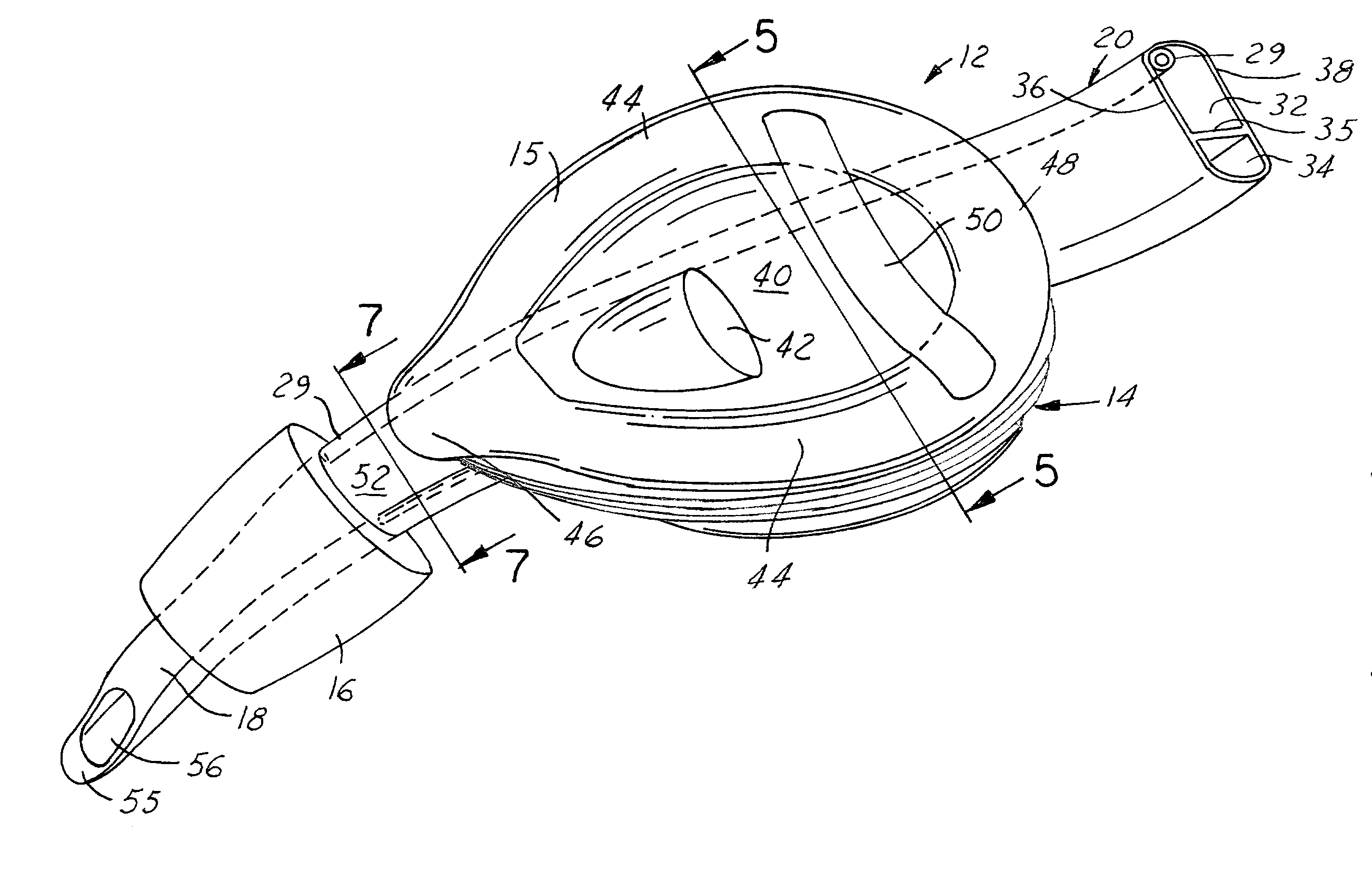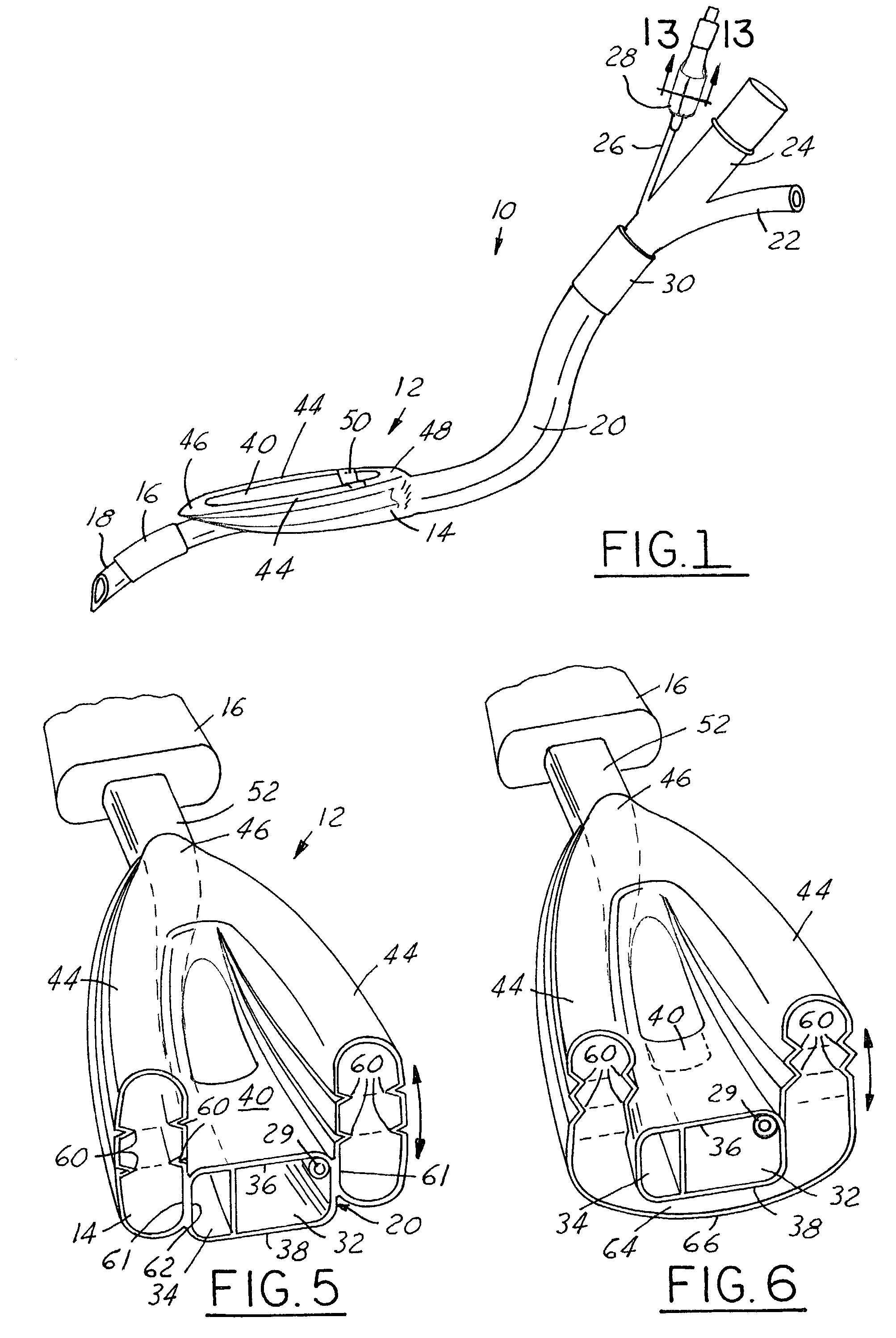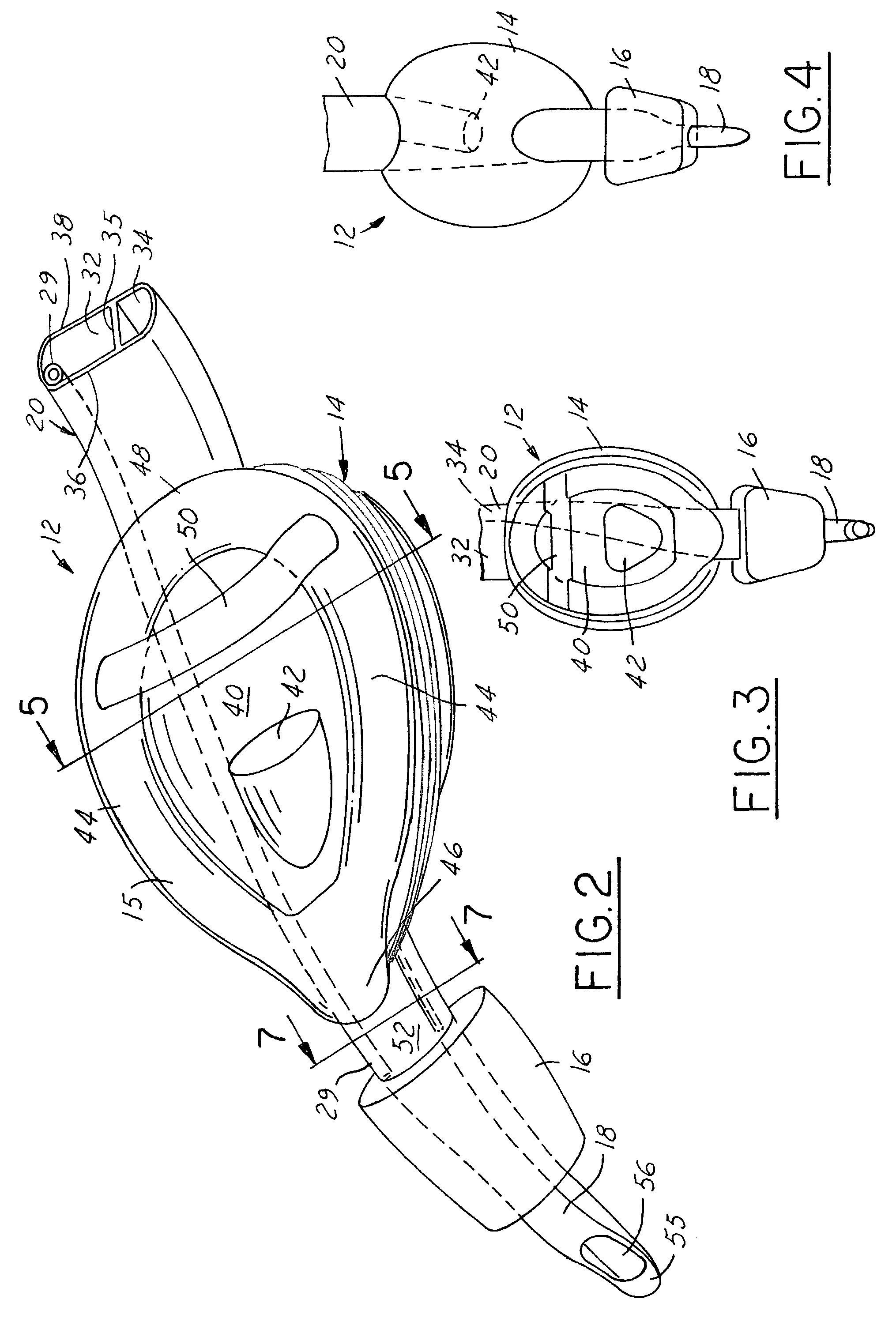Combination artificial airway device and esophageal obturator
a technology of artificial airway and esophageal obturator, which is applied in the direction of respirator, tracheal tube, inhalator, etc., can solve the problems of high degree of skill and use of endotracheal intubation, the use of traditional laryngeal mask devices is encountered in patients who are at risk of vomiting or regurgitating stomach contents, and the use of traditional laryngeal mask devices is encountered in patients who are at risk
- Summary
- Abstract
- Description
- Claims
- Application Information
AI Technical Summary
Benefits of technology
Problems solved by technology
Method used
Image
Examples
Embodiment Construction
[0046]Referring now to FIGS. 1, a combination artificial airway device and esophageal obturator 10 includes a laryngeal mask 12 that has an inflatable supraglottic cuff 14. The device 10 also includes an inflatable esophageal cuff 16 near a distal end of an esophageal drain tube 18.
[0047]The device 10 is shown in a resting position with a “S” like shape with the distal end of the drain tube 18 curved in a convex or upright direction as shown in FIGS. 9–11 and the conduit 20 curved in an opposite or concave direction, i.e. downward direction as shown in use in FIG. 9–11. of course, the device is flexible to allow proper handling and installation.
[0048]The proximal end of conduit splits off into an esophageal limb 22, tracheal limb 24 and inflation limb or tube 26 with pilot balloon 28. The pilot balloon 28 can be made from an elastic material. As shown more clearly in FIGS. 12 and 13, the pilot balloon 28 is circumscribed or circumferentially surrounded by a semi-spiral cylinder 25 m...
PUM
 Login to View More
Login to View More Abstract
Description
Claims
Application Information
 Login to View More
Login to View More - R&D
- Intellectual Property
- Life Sciences
- Materials
- Tech Scout
- Unparalleled Data Quality
- Higher Quality Content
- 60% Fewer Hallucinations
Browse by: Latest US Patents, China's latest patents, Technical Efficacy Thesaurus, Application Domain, Technology Topic, Popular Technical Reports.
© 2025 PatSnap. All rights reserved.Legal|Privacy policy|Modern Slavery Act Transparency Statement|Sitemap|About US| Contact US: help@patsnap.com



